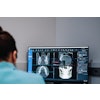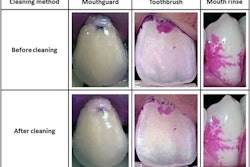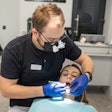
Infection with a common bacteria linked with periodontal disease, oral cancers, and bad breath may cause a slight increase in the risk of cardiovascular disease, according to a study published on February 14 in eLife.
Researchers led by Dr. Flavia Hodel of the Swiss Federal Institute of Technology Lausanne analyzed genetic information, health data, and blood samples from 3,459 people and reported that antibodies formed against the bacteria Fusobacterium nucleatum were linked with a slightly increased risk of a cardiovascular event. The study suggests another potential risk factor that physicians might screen for to identify individuals at risk of heart disease, according to the group.
"Although enormous progress has been made in understanding how coronary heart disease develops, our understanding of how infections, inflammation, and genetic risk factors contribute is still incomplete," Hodel said in a news release from the institute.
Hodel and colleagues analyzed data from a subset of 3,459 people who participated in a previous study. Around 6% experienced a heart attack or other harmful cardiovascular event during a 12-year follow-up period. The team tested participants' blood samples for the presence of antibodies associated with 15 different viruses, six bacteria, and one parasite.
Once the authors adjusted the results for known cardiovascular risk factors, they found that antibodies made against F. nucleatum, a sign of a previous or current infection by the bacterium, were linked with a slightly increased risk of a cardiovascular event.
"F. nucleatum might contribute to cardiovascular risk through increased systemic inflammation due to bacterial presence in the mouth, or through direct colonization of the arterial walls or plaque lining the arterial walls," Hodel explained.
Ultimately, if future studies confirm the link between F. nucleatum and heart disease, the authors say it may lead to new approaches for identifying those at risk of or preventing cardiovascular events.



















